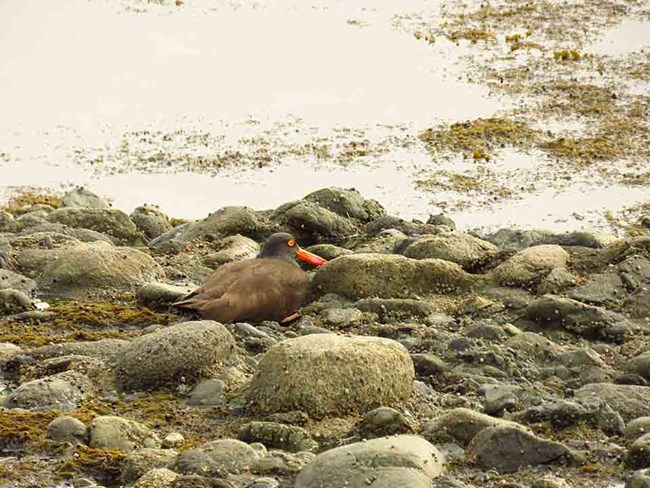Last updated: October 26, 2021
Are prey remains accurate indicators of chick diet? A comparison of diet quantification techniques for Black Oystercatchers
Abstract
The quantification of prey remains is a common method for estimating the diet of a variety of birds. However, these estimates may be subject to biases based on prey body type, nesting habitat, and collection date. To better understand biases and limitations associated with this method, we compared it with two others commonly used to characterize diet: direct observation of parents feeding young and diet reconstruction by stable isotope analysis. In 2013–2014, we monitored the diet of 20 Black Oystercatcher broods in south-central Alaska using all three methods, having collected 2,126 prey remains, observed 1,979 prey items fed to chicks, and obtained stable isotopes values of 39 blood samples from 22 chicks. Direct observations and stable isotope techniques similarly characterized diet composition but these approaches yielded different results from those obtained using prey remains. Soft-bodied prey, such as worms, were not detected in prey remains, and filter-feeders were under-represented. For example, mussels and barnacles, which have flesh that can be removed without having to detach the shell from the substrate, were underestimated using prey remains (mussels: 33% for prey remains vs. 44% and 43% for observations and stable isotopes, respectively; barnacles: 2% vs. 9% and 8%, respectively). On rocky islands, where chicks are confined to a small area around the nest, there were significantly greater quantities of prey remains constituting different diets than on gravel beaches, where chicks leave the nest site within days of hatching. For researchers using prey remains to monitor diet, we suggest that they combine this method with direct observations or stable isotope analysis to understand what prey items may be missed or under-represented.
Robinson, B. H., H. A. Coletti, L. M. Phillips, and A. N. Powell. 2018. Are prey remains accurate indicators of chick diet? A comparison of diet quantification techniques for Black Oystercatchers. Wader Study 125(1): 00–00.

